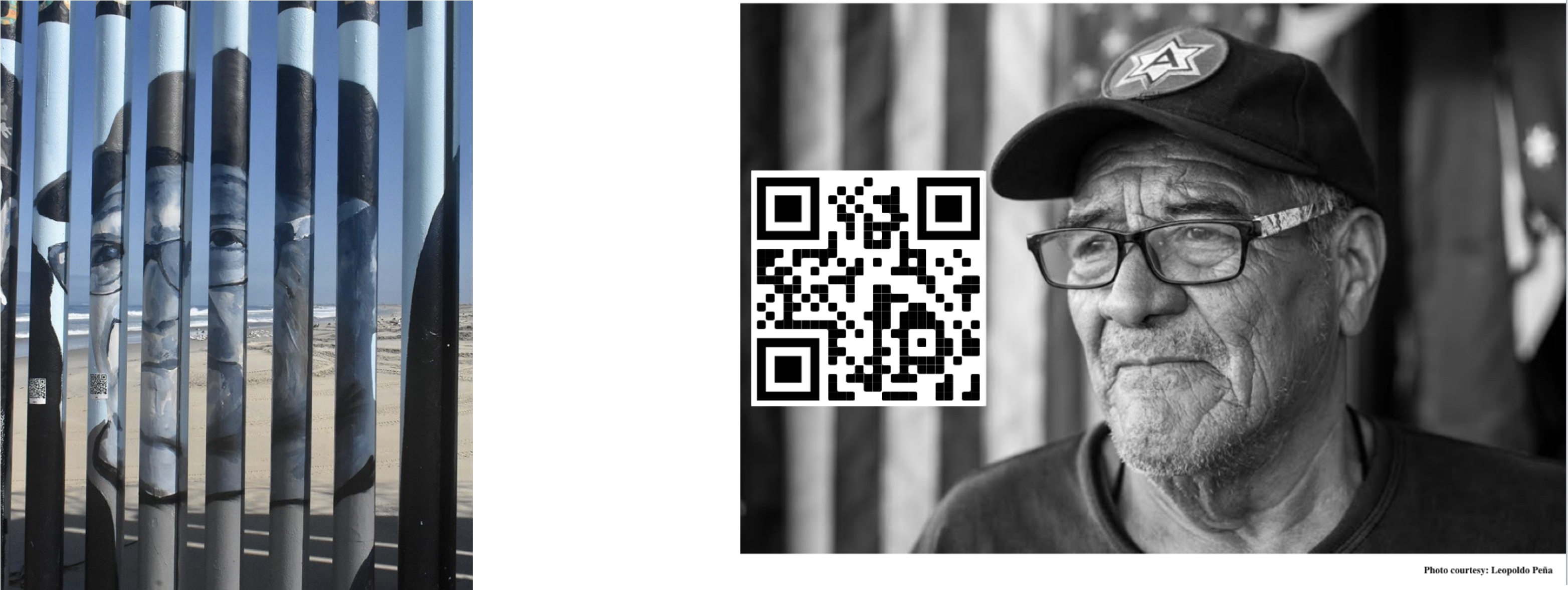
Lizbeth De La Cruz a Ph.D. Candidate in Spanish Latin American Literatures and Cultures in UC Davis. As a UC President's Pre-Professoriate Fellow for the academic year of 2020-2021, she is writing her first book manuscript, which draws from her doctoral dissertation. Her dissertation centers on the concept of childhood arrivals to the United States and intends to draw attention to a range of ethical-oriented concerns regarding the legal treatment of this group. It develops the Childhood Arrivals Critical Theory (CACrit) framework, introduces a more general definition of this group, and coins the Childhood Arrivals Diaspora.
lizbethdelacruzsantana.com
ldsdelacruz@ucdavis.edu
@lizbethdsantana
Lizbeth De La Cruz Santana's formation in Latin American testimonial literature, community-engaged scholarship, and digital storytelling has inspired the creation of a community mural that aims to bring to public attention the United States childhood arrivals dilemma.
The Playas de Tijuana Mural project (https:// lizbethdelacruzsantana.com/about) centers the stories of migrants that entered the United States as minors ("childhood arrivals") and remained with a
non-citizen status.
The Playas de Tijuana Mural Project is located on the western point of the U.S.-Mexico border separating San Diego from Playas de Tijuana. It’s the first art piece visitors can see when approaching the beach. Its symbolic location interpolates outsiders to engage the mural both as a memorial and a critique to the intersection between U.S. criminal and immigration law that makes deportable all non-citizen migrants.

As this is one of the most visited spaces of the border fence, the mural project has helped
begin a conversation on who is vulnerable to deportation in the U.S. Its visible placement and the magnitude of the portraits makes visitors acknowledge the mural, which can allude to the idea that the stories and faces of those marked my deportation exist and should not be ignored.
The project's primary goal is to highlight the myriad of stories that make up the childhood arrivals profile presented in De La Cruz Santana's doctoral dissertation. There, she coins the Childhood Arrivals Critical Theory (CACrit) framework, childhood arrivals diaspora, and defines childhood arrivals. These concepts are inspired by the digital narratives of storytellers in the Humanizing Deportation archive.
That same summer De La Cruz Santana began the first phase of the Playas de Tijuana Mural Project documentary, a film that intends to audio-visually represent the chapters of her doctoral dissertation. The documentary will be finalized in Summer 2022.

The selected six stories and the 300+ Quick Response (QR) codes plastered on the fence communicate a sample of the stories of childhood arrivals as presented in their digital narratives. These were created by using digital storytelling as the method to bring to life their testimonies. The stories that make this mural are part of the Humanizing Deportation (http:// humanizandoladeportacion.ucdavis.edu/en/) and the DACAmented: DREAMs Without Borders (https://lizbethdelacruzsantana.com/archive) digital storytelling projects.
This is the first time a mural at the border incorporates Quick Response (QR) codes into a border wall that has allowed audiences the opportunity to not only listen and watch the narratives but to also take agency in sharing the stories.
The Stories
Isaac Rivera

In this first part of his narratives, Isaac tells the story of his arrival to the United States, and the struggles of growing up in Southern California without documents. He talks about how he was detained by the Border Patrol and deported to Mexico. He is deported to Tijuana where he knows no one. He is devastated. Only after a major catharsis is he able to move on with his life. He is now a successful entrepreneur who spends his free time volunteering.
Jairo Lozano

In his narrative, Jairo speaks on his coming of age undocumented experiences in the Central Valley. He highlights his parent’s immigration status and his own to bring to light the myriad of situations that undocumented people navigate each day. Regardless of the many obstacles, Jairo received his Master’s Degree and is now supporting youth as a counselor and using music to make a positive change in their lives. Additionally, he speaks on the benefits of having DACA and why keeping DACA is essential to many just like him.
Tania Mendoza

In her narrative, Tania shares how her family tries to legalize their status, but are tricked by dishonest immigration lawyers and end up living with a deportation order hanging over them. Years later, Tania, a single mom, is picked up by police following a domestic dispute, and ends up getting deported. Despite the brusque manner in which people are deported, Tania adjusts to her life in Tijuana. However, she suffers a great deal due to the separation from her daughter. When her daughter’s father cuts off communication, she is devastated, but regains hope when her custody case is reopened in Los Angeles.
Andy De León

In his narrative, Andy shares how after living more than 50 years in the United States, having permanent residency status and being a US army veteran did not impede his deportation. In his story he recounts how life for him as a senior citizen in Tijuana has been tough, even after obtaining his veterans benefits.
Monserrat Godoy

In her narrative, Monserrat reads Mamá leona contra la muro, a children’s book she authored. She wrote and dedicated this book to her daughters Carolina and Catalina. Here, she tells us with a children’s story the effects of family separation due to deportation.
Karla Estrada

In her narrative, Karla speaks on the undocumented youth movement, DACA, and the immigration crisis in the U.S. In her story Karla illustrates the effects of the deportation of her younger sibling in 2017. His deportation triggered the repatriation of her parents who returned to Mexico to accompany her brother. The brother, a childhood arrival, was struggling to assimilate to the culture and customs of his country of birth.
For updates on the project follow the project on social media.

